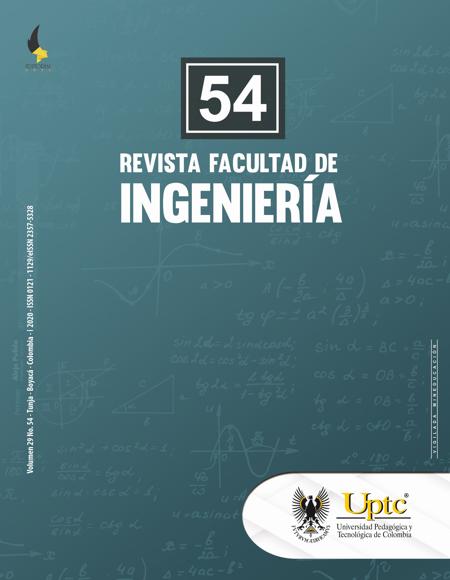Object Recognition Through Artificial Intelligence Techniques

Abstract
This paper describes a methodology for object recognition categorized as polyhedron and non-polyhedron. This recognition is achieved through digital image processing combined with artificial intelligence algorithms, such as Hopfield networks. The procedure consists of processing images in search of patterns to train the system. The process is carried out through three stages: i) Segmentation, ii) Smart recognition, and iii) Feature extraction; as a result, images of objects are obtained and trained in the designed neuronal network. Finally, Hopfield's network is used to establish the object type as soon as it receives one. The proposed methodology was evaluated in a real environment with a considerable number of detected images; the noisy images recognition uncertainty was 2.6%, an acceptable result considering variable light, shape and color. The results obtained from this experiment show a high recognition level, which represents 97.4%. Out of this procedure, we can assume that it is possible to train new patterns, and it is expected that the model will be able to recognize them. Potentially, the proposed methodology could be used in a vast range of applications, such as object identification in industrial environments, grasping objects using manipulators or robotic arms, tools for blind patients, among other applications.
Keywords
Objects recognition as of 2D images, morphologic operations, neuronal networks, Hopfield network
References
[1] S. Todorovic, and N. Ahuja, “Unsupervised Category Modeling, Recognition, and Segmentation in Images,” IEEE Transactions on Pattern Analysis and Machine Intelligence, vol. 30, pp. 2158-2174, 2008. https://doi.org/10.1109/TPAMI.2008.24
[2] S. Chartier, and R. Lepage, “Learning and extracting edges from images by a modified Hopfield neural network,” Object recognition supported by user interaction for service robots, Quebec, Canada, 2002.
[3] R. Sammouda, and B. B. Youssef, "A comparison of cluster distance metrics for the segmentation of sputum color image using unsupervised hopfield neural network classifier," in Global Summit on Computer & Information Technology, Sousse, Tunez, 2014. https://doi.org/10.1109/GSCIT.2014.6970130
[4] X. Zhao, Y. Li, and Q. Zhao, “A Fuzzy Clustering Approach for Complex Color Image Segmentation Based on Gaussian Model with Interactions between Color Planes and Mixture Gaussian Model,” International Journal of Fuzzy Systems, vol. 20, pp. 309-317, 2017. https://doi.org/10.1007/s40815-017-0411-1
[5] K. Mutter, M. Jafri, and A. Aziz, “Real time object detection using Hopfield neural network for Arabic printed letter recognition,” in 10th International Conference on Information Science, Signal Processing and their Applications (ISSPA), 2010. https://doi.org/10.1109/isspa.2010.5605416
[6] C. M. Bishop, Pattern recognition and machine learning, New York: Springer, 2006.
[7] S. S. Young, P. D. Scott, and N. M. Nasrabadi, "Object recognition using multilayer Hopfield neural network," IEEE Transactions on Image Processing, vol. 6 (3), pp. 357-372, 1997. https://doi.org/10.1109/83.557336
[8] Z. Hongbin, N. Hideki, and N. Tadashi, “Recognizing 3D objects by using a Hopfield-style optimization algorithm for matching patch-based descriptions,” Pattern Recognition, Pergamon, vol. 31, pp. 727-741, 1998. https://doi.org/10.1016/s0031-3203(97)00105-2
[9] H. Zha, H. Nanamegi, and T. Nagata, "3-D object recognition from range images by using a model-based Hopfield-style matching algorithm," in 13th International Conference on Pattern Recognition, Vienna, Austria, 1996. https://doi.org/10.1109/ICPR.1996.547244
[10] N. M. Nasrabadi, and W. Li, "Object recognition by a Hopfield neural network," IEEE Transactions on Systems, Man, and Cybernetics, vol. 21 (6), pp. 1523-1535, 1991. https://doi.org/10.1109/21.135694
[11] E. García, “Detección y clasificación de objetos dentro de un salón de clases empleando técnicas de procesamiento digital de imágenes,” México, 2008. http://newton.azc.uam.mx/mcc/01_esp/11_tesis/tesis/terminada/080513_garcia_santillan_elias.pdf
[12] P. Fiorentin, and A. Scroccaro, "Comparison of luminance measurement based on illuminance and luminance detectors," in Conference IEEE Instrumentation and Measurement Technology, Singapore, 2009. https://doi.org/10.1109/IMTC.2009.5168561
[13] B. Escalante, “Procesamiento digital de imágenes,” Apuntes de curso, Distrito Federal, México, 2006. http://lapi.fi-p.unam.mx/wp-content/uploads/PDI_Cap1_Introduccion.pdf
[14] E. Lucer, and H. Saldana, “Utilización de técnicas de visión artificial para la detección automática de defectos externos del mango,” Grade Thesis, Universidad Señor de Sipán, Chiclayo, Perú, 2016.
[15] A. Martínez, “Técnicas de segmentación de imágenes, reconstrucción y descomposición de mallas enfocadas y aplicaciones médicas,” Doctoral Thesis, Universidad de Jaén, Spain, 2013. http://ruja.ujaen.es/bitstream/10953/524/1/9788484390398.pdf
[16] E. R. Davies, Machine Vision, Theory, Algorithms, Practicalities, Elsevier, 2004.
[17] Mathworks, "MathWorks-Makers of MATLAB and Simulink," 2020. https://www.mathworks.com/
[18] S. Ortiz, and C. Lemus, “Diseño de un modelo basado en técnicas de inteligencia artificial para el desarrollo de un sistema inteligente orientado al aprendizaje,” Grade Thesis, Escuela Especializada en Ingeniería ITCA, Santa Tecla, El Salvador, 2011. https://www.itca.edu.sv/wp-content/themes/elaniin-itca/docs/2011-Diseno-de-un-modelo-basado-en-tecnicas-de-inteligencia.pdf
[19] J. R. Hilera, and V. J. Martínez, Redes neuronales artificiales: Fundamentos, modelos y aplicaciones, RA-MA, 2009.
[20] D. J. Matich, Redes Neuronales: Conceptos Básicos y Aplicaciones, Universidad Tecnológica Nacional, Argentina, 2001.
[21] M. J. Palmer, and J. J. Montaño, “¿Qué son las redes neuronales artificiales? Aplicaciones realizadas en el ámbito de las adicciones,” Adicciones, vol. 11, pp. 243-255, 1999.
[22] Electronica.com.mx, "Hopfield", 2020. http://electronica.com.mx/neural/informacion/hopfield.html
[23] L. Wang, "Effects of noise in training patterns on the memory capacity of the fully connected binary Hopfield neural network: mean-field theory and simulations," IEEE Transactions on Neural Networks, vol. 9 (4), pp. 697-704, 1998. https://doi.org/10.1109/72.701182